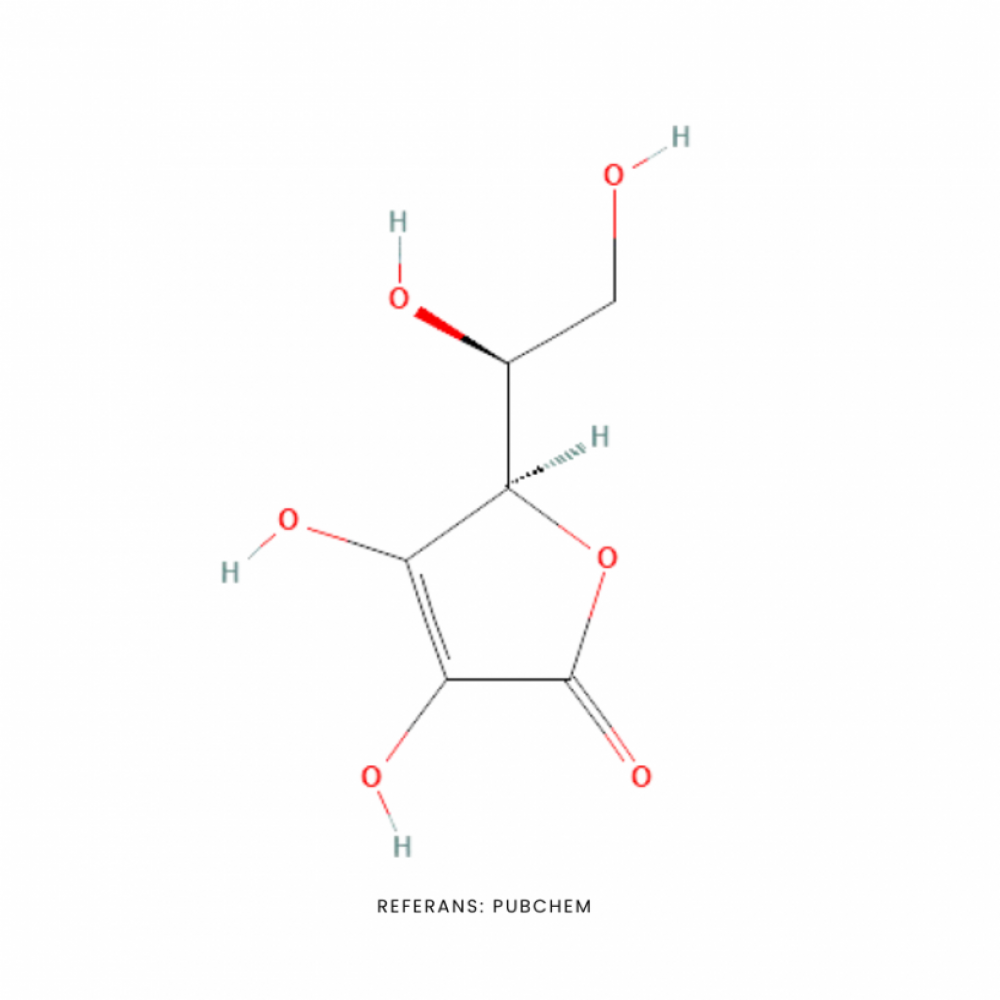
Ascorbic acid is an essential active ingredient for humans. Ascorbic acid is a water-soluble vitamin found in fruits (lemon, orange, grapefruit, etc.) and green leafy vegetables (green pepper, spinach, etc.). The molecule was first discovered in 1912 and isolated in 1928. From 1928 to 1932, a research team led by Albert Szent-Györgyi and American researcher Charles Glen King identified the antiscorbutic factor as a single chemical substance. Its first synthesis was made in 1934.
Molecular Formula: C6H8O6
Molecular Weight: 176.12 g/mol
PubChem CID: 54670067
CAS Number: 50-81-7
Synonyms: Vitamin C, L Ascorbic Acid
MeSH Pharmacological Classification:
Antioxidants:Naturally occurring or synthetic substances that inhibit or retard oxidation reactions. They counteract the damaging effects of oxidation in animal tissues.
Vitamins: Organic substances that are required in small amounts for maintenance and growth, but which cannot be manufactured by the human body
ATC Code:
A Digestive System and Metabolism
A11 Vitamins
A11G Ascorbic Acid (Vitamin C) and Combinations
A11GA Ascorbic Acid (Vitamin C) (Lean)
A11GA01 Ascorbic Acid
Ascorbic acid is reversibly oxidized to dehydroascorbic acid in the body. Ascorbic acid and the dehydro-ascorbic acid formed from it in the organism form a redox system of great physiological importance. Ascorbic acid is mainly used in the treatment of vitamin C deficiency. Besides this its redox potential, ascorbic acid (Vitamin C) acts as a co-factor of numerous enzyme systems (collagen formation, catecholamine synthesis, hydroxylation of steroids, tyrosine and foreign substances, carnitine biosynthesis, tetra hydrophic acid regeneration and alpha-amidation of peptides such as ACTH and gastrin). It has an impact on carbohydrate metabolism, synthesis of lipids and proteins, iron metabolism, resistance to infections, and cellular respiration.
In humans, an exogenous source of ascorbic acid is required for collagen formation and tissue repair by acting as a cofactor in the posttranslational formation of 4-hydroxyproline in -Xaa-Pro-Gly- sequences in collagens and other proteins. The vitamin is involved in tyrosine metabolism, conversion of folic acid to folinic acid,